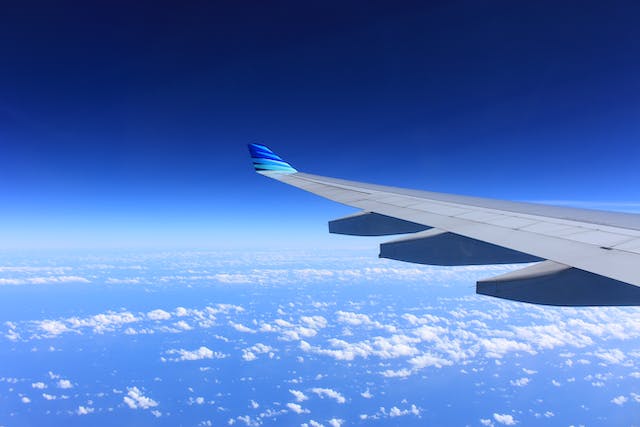
What causes turbulence? It happens when an airplane flies through turbulent air (hence the word turbulence) and gets buffeted around.
Turbulence can cause a plane to suddenly rise or fall hundreds of meters very quickly. It can also cause a lot of shaking, and it can cause some damage to the plane, but it very rarely causes any accidents. Between 2009 and 2022, 34 passengers and 129 crew members were injured by turbulence. It can very occasionally cause the death of people on the plane (one person died in 2023), and it causes about $500 million of damage to planes per year. However, 163 people injured in 13 years is not a lot when you realize that 50 billion people have flown in that same time frame.
Most of the injuries that are caused by turbulence are amongst the aircrew rather than the passengers because the cabin attendants have to be moving around the inside of the plane while the passengers are usually sat down with their seatbelts on. These days, we are told on planes to always keep our seatbelts loosely fastened, even when the seatbelt sign is off. This has reduced the number of passenger injuries on planes. The cabin crew have to be moving around and turbulence can fling them up and down inside the aircraft.
Turbulence is caused by winds moving in chaotic directions. We might think of winds blowing horizontally, but they blow in all directions because air is a fluid. Note that a fluid is not a liquid. All liquids are fluids, but not all fluids are liquids. Gases and liquids are fluids because of the way they move. A fluid is “a substance that has no fixed shape and yields easily to external pressure”. Air deforms and moves when pressure is applied to it. Air being a fluid is also the reason why planes can fly in the first place. The wing is curved, and the air is pushed to either side of it. The air flowing over the top, curved side of the wing moves faster than the air moving underneath the bottom, flat side of the wing, and the air pressure is lower when the air moves faster. Air pressure is the relation of how many atoms there are in a certain volume and when a liquid moves faster, there are fewer molecules and a lower pressure. The higher pressure under the wing pushes up towards the lower pressure, creating lift. This happens because of the laws of fluids.
When there is an area of high pressure and an area of low pressure in the air, the two pressures equalize by moving atoms from the high pressure to the low pressure. This causes winds. Quite often, the areas of pressure create stable winds that planes can ride with, like a current in the sea. However, these stable winds are sometimes interrupted by other winds, causing turbulence. There are several things that can cause this.
Mountains are a common cause of turbulence. When wind reaches a mountain, it has to go up and over it. Occasionally, the wind can build up on one side of the mountain and push other air straight up into the sky. This air can hit the plane from below and buffet it or push it up.
The winds in the jet streams can cause turbulence as well. The jet streams are bands of strong winds that blow from west to east around the world. There are four main jet streams and planes try to use these to save on fuel when they fly. However, the winds on the outer edges of the jet stream are not as fast as the ones in the middle and when planes move out of the jet stream, these slower winds can buffet and rock the plane.
Thermal winds can cause the plane to rock. When the sun heats the air in the atmosphere, it rises up. This rising air can push the plane, or break up the wind that the plane is riding with. This air can come from the ground or it can come from storm clouds, which are caused by rising hot air.
Storm clouds can also cause turbulence because they grow very rapidly and as they expand they push the air away. This creates waves of air that can rock planes further out from the storm.
Other planes can cause turbulence. In the same way a boat travelling through a lake creates a wake, airplanes create a wake in the sky. When a plane flies through the wake left by the passing of another plane, it can cause buffeting.
Air at lower levels can be more prone to turbulence because there are more objects on the ground that mess with the airflow. Friction with the ground and objects can slow down some parts of the air, making a rougher ride. It is fairly common to experience turbulence when taking off or landing.
Planes aim to fly at about 10,000 to 11,000 meters above sea level because the air is thinner, producing less air resistance. It also means that they are above most of the turbulence that these chaotic winds produce. However, they can still be affected by turbulence at any height. These days, there are pretty good ways of predicting where the turbulence will be, but it is always best to keep your seatbelt fastened. And this is what I learned today.
Photo by Pixabay: https://www.pexels.com/photo/gray-plane-wing-62623/
Sources
https://www.npr.org/2023/03/05/1161196591/turbulence-airplanes-injuries-death-safety
https://www.faa.gov/newsroom/turbulence
https://www.nationalgeographic.com/travel/article/what-is-turbulence-explained
https://www.firstpost.com/explainers/air-turbulence-us-passenger-dies-causes-dangers-12250832.html
https://www.statista.com/statistics/564717/airline-industry-passenger-traffic-globally/
https://lovethemaldives.com/faq/can-planes-go-down-from-turbulence
